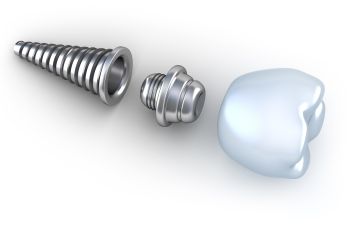
Dental implants have an ancient history. While the earliest attempts to replace a lost tooth probably yielded less-than-desirable results, modern dental implants have a 98 percent success rate. At Fort Bend Dental, we have provided the Missouri City, TX, Richmond, TX, and entire Fort Bend County community with advanced dental procedures serving the community since 1987.
One of our partners, Dr. Dwight D. Peccora, received his Doctorate of Dental Surgery degree from the University of Texas School of Dentistry. He is a Diplomat with the International Dental Implant Association.
Earliest Use of Dental Implants
Ancient China (2000 BC) is credited with the first tooth replacement attempts. Those earliest treatments were made from carved bamboo pegs. The Egyptians may have used metal pegs to replace lost teeth, although it is unclear if the implants were placed before or after death. Other civilizations have used gems and seashells to replace lost teeth over the past centuries.
In the late 19th century, an attempt to place a porcelain crown over an implanted platinum disc was made with undesirable results. Surgeons could place a dental implant, but there wasn’t an understanding of how to encourage the surrounding bone tissue to accept the foreign object.
Osseointegration
In the 1930s, two doctors, Alvin and Moses Strock, used orthopedic screws to restore teeth in humans and dogs. A false tooth was fitted to the screws. The shape and base material of implants were further refined throughout the 20th century.
Dental implants became a viable option for dentists with the discovery of a natural process called osseointegration. An orthopedic surgeon discovered osseointegration while testing the use of titanium hardware in the healing bone of a rabbit femur. The biocompatible benefits of titanium led to its increased use in the medical field.
Branemark, an orthopedic surgeon, then placed the first successful dental implant in 1965.
The earliest uses of dental implants were to support dentures in individuals who could no longer be fitted with removable dentures. Tooth loss causes bone atrophy, which can eventually lead to malformations of the jaw.
Improvements to the Implant’s Surface
Further advances involved improvements to the treatment of the implant’s surface. Researchers and dentists found that creating microscopic indentions on the surface of the implant through the use of acid etching and sandblasting lowered healing time and improved stability by increasing the surface area of the implant.
Modern Dental Implants
Continual refinements and advances in dental technology have made dental implant technology incredibly safe and reliable. At Fort Bend Dental, our digital 3D CT imaging system and panoramic x-rays allow your doctor to fully map out your teeth and supporting structures before your implants are placed.
Our office also uses advanced CEREC technology to fabricate your restoration and platelet-rich plasma (PRP) therapy, which uses your own growth factors to expedite healing following implant placement.
Schedule Your Dental Implant Placement Today
Every step of your dental implant placement can be handled at our Missouri City dental practice. In addition to using local anesthesia, our office offers sedation that allows you to relax throughout implant placement. To schedule your dental implant consultation, please contact our office online or call us.
Posted on behalf of

